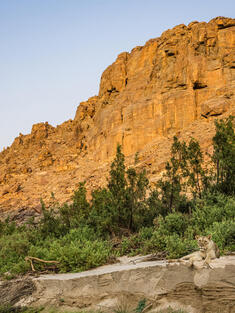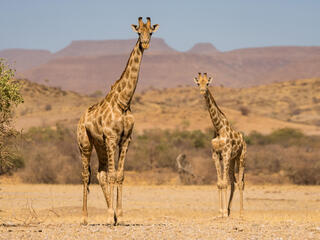Pastoral communities and wildlife—including desert elephants, black rhinos, lions, giraffes, Hartmann’s mountain zebras, oryx, springboks, kudus, and ostriches—have always roamed across the vast landscapes of Namibia’s arid northwest, searching for life-sustaining springs and pastures.
But the legacy of colonial and apartheid land-use policies has made it harder for animals and people to follow historic seasonal routes. And this loss of connected, safe movement corridors has had devastating consequences. Combined with the extended droughts climate change has wrought and the increasing development in wildlife-rich areas, people and animals are in ever-closer contact. And conflict between people and wildlife is on the rise.
Forging better connections between Namibia’s large intact habitats—whether they’ve been secured via traditional protected areas or other forms of area-based land management—remains an urgent need. Only extensive, thoughtfully located conservation will help manage this conflict while allowing people and animals to revive their cyclical land-use patterns, which can be especially important during droughts.
Visionary initiatives to connect Namibia’s Skeleton Coast and Etosha National Parks, including core wildlife areas like the proposed Ombonde People’s Park, will increase conservation-related benefits for people and wildlife, and expand the impact of Namibia’s equitable model of conservation.
Driven by the aspirations of the Namibians who have cared for the land for generations, these initiatives will help conservancies pursue their own socioeconomic goals while coordinating shared responses to climate change, invasive species, and poaching.
The vision, writ large, looks like this: Build on existing connections within the landscape, promote responsible resource use, and protect some of the most important corridors for wildlife—including the areas connecting key pockets of intact habitat for lions, rhinos, and elephants, as well as the spectacularly long migration routes of mountain zebras and oryx. Together, these landscape-scale protections will both offer people economic opportunities and help protect the wildlife that makes Namibia’s northwest such an iconic place.







